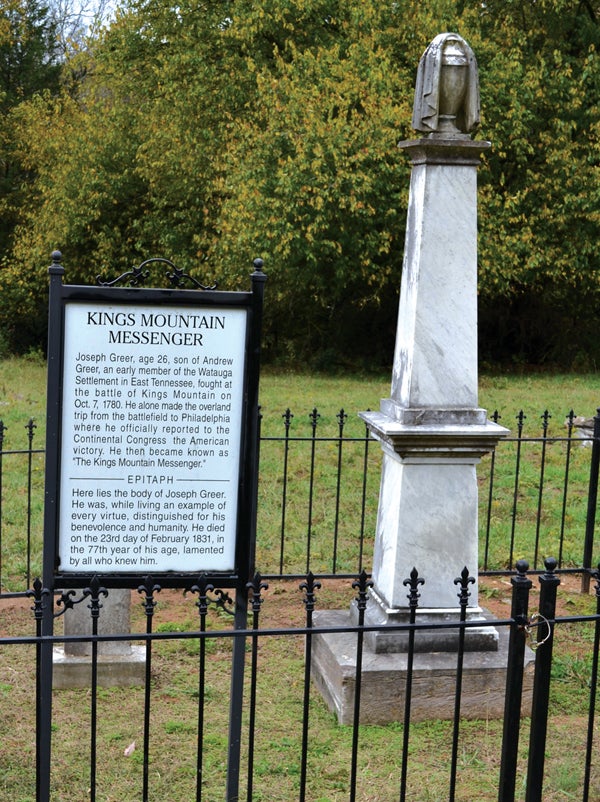Kings Mountain turned tide of American Revolution
Published 5:01 pm Tuesday, October 5, 2021
|
Getting your Trinity Audio player ready...
|
October 7 is the 241st anniversary of the most important victory in Tennessee history.
During the Revolutionary War, a British commander named Patrick Ferguson led an army of British loyalists through South Carolina. Along the way, he sent a message to the Scotch-Irish settlers in present-day northeast Tennessee, telling them to lay down their arms or he would “lay waste to their country with fire and sword.”
Isaac Shelby and John Sevier, leaders in northeast Tennessee, decided to raise an army and fight Ferguson before he had a chance to carry out his threat.
On September 25, these men gathered at the Sycamore Shoals of the Watauga River (present-day Elizabethton). There were 240 from Washington County, 240 from Sullivan County, and 400 from Virginia. Most of these men had no military training. None had real uniforms. Some didn’t even have shoes!
But they were skilled with rifles, and many had previous experience fighting against Native Americans. These men said goodbye to their families, not knowing if they would ever see them again.
The “Overmountain Men,” as they became known, crossed the Appalachian Mountains — marching, walking and riding 330 miles in two weeks. On October 7, they tracked down Ferguson’s army on one of the few hills in the northwest part of South Carolina, a hill Ferguson had dubbed “Kings Mountain.”
The colonial forces split into groups and surrounded the hill. Ferguson’s men lined up and prepared to defend themselves.
The battle that followed was not long or complicated.
The colonial forces yelled at the top of their lungs and charged up the hill. They fired, ducked behind the nearest rock or tree to reload, and fired again. They used tactics they had learned from fighting Native Americans on the frontier.
Ferguson’s men fired, reloaded and fired again. On at least two occasions, his men affixed bayonets to their rifles and charged down the hill. The Overmountain Men ran from the bayonets. But after Ferguson’s men headed back up to defend the top of the hill, the Overmountain Men turned around and chased them.
There are many first-person accounts of the battle. One soldier, Leonard Hice, was shot twice in the left arm, once in his left leg, once in his right knee and once in the chest. He kept firing after the first two bullets hit his arm by resting his rifle against a tree. “Whether my bullet brought the enemy down or not, I cannot say, for many were as good a marksman as I,” he later wrote.
We believe the men shooting from the bottom of the hill were more likely to hit their targets than the men shooting down at them, in part because of the rocks and trees they hid behind.
About the time colonial soldiers made their way to the top of the hill, they killed Ferguson. (A later examination of the body revealed that the British commander had been shot seven times.) At that point, the battle became a slaughter.
In the Battle of Kings Mountain, 244 members of Ferguson’s army were killed, 163 were wounded and 688 were taken prisoner. Only 29 colonial soldiers were killed and 58 wounded.
Coming at the time that it did, after British victories at Charleston and Camden, Kings Mountain was a huge boost for the American side.
One final story about Kings Mountain: After the battle, Sevier chose a Washington County soldier named Joseph Greer to deliver the message about the battle to the American Congress. Greer, a physical giant by standards of the time, made the journey by himself, avoiding British soldiers and Native Americans the whole way.
When Greer got to Congress, the doorkeeper tried to bar his entrance. The veteran of Kings Mountain pushed him aside and delivered the message to the representatives there, who were thrilled with the news.
Joseph Greer later moved to Lincoln County, where he lived until 1831.





